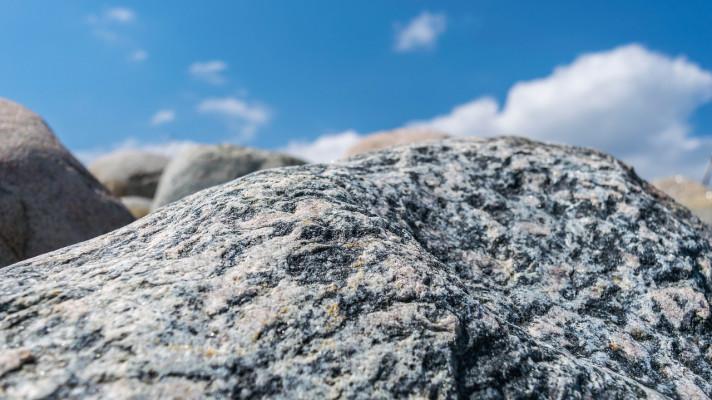Geologie Skotska
Deep time
Scotland's story stretches back to the early history of the earth, with our oldest rocks formed an unimaginable 3 billion years ago. Stand on any rock in Scotland, and you are standing on a piece of history, one offering a glimpse into Scotland's past. But more than that, you can feel the slow, ceaseless change on a global scale which has created and altered these rocks, and sense that we are but small flecks on an ever-changing tapestry. This idea of 'deep time', of gradual changes over a huge time span, and of continued gradual change, owes its genesis to a famous Scot, James Hutton (1726 - 1797). Hutton's theory of the Earth challenged the accepted precepts of the day, that the Earth was merely a few thousands of years old, and laid the basis for the modern science of geology.
Scotland's geological jigsaw
We can imagine Scotland as a jigsaw, with six main pieces, slabs of continent formed at different times in different places. 
A brief tour of Scotland's geology
The Outer Hebrides
Scotland's oldest rocks - also the oldest in Europe - can be found in the The Outer Hebrides. These ancient gneisses, used in the standing stones at Callanish in Lewis, have been deeply buried and contorted during a long history. These rocks are also found on the mainland, in a thin strip along the north-west coast. Here they are often buried under younger sandstones and limestones, including the Torridonian Sandstones, dating back to 1 billion years and the oldest sedimentary rocks in Scotland.
The Moine Thrust
Just inland from the coast, we come to our first major discontinuity, the world-famous Moine Thrust, which is best seen at Knockan Crag, just north of Ullapool. This fault plane separates the gneiss and sandstones of the west from metamorphic rocks, the Moine Schist, to the east. The schists were originally ocean sediments, were caught up in Caledonian Orogeny, and pushed westwards over sedimentary rocks. This juxtaposition of metamorphic rocks above sedimentary rocks was a major puzzle to the Victorian geologists who first studied them, and solving the puzzle represented a major leap forward in our understanding of mountain building and faults.
The Great Glen
Travelling further south, we reach the Great Glen between Inverness and Fort William, site of a major fault line separating two blocks of metamorphic rocks with different histories. To the east, these rocks are buried under the Old Red Sandstone, made famous by stonemason Hugh Miller (1802 - 1856), who found many unique specimens of fossil fish around Cromarty on the Black Isle.
The Cairngorms
South of the Great Glen, the Highland schists often contain large bodies of granite, for example in the Cairngorm mountains. These granite masses were once molten, with hot, liquid rock squeezing and melting its way towards the surface. Trapped in the crust, the magma cooled slowly, forming the crystalline granite. This activity was associated with the Caledonian Orogeny, and there were many volcanoes as well, as for example at Glencoe. What we see in the Highlands now is the result of millions of years of erosion that has removed the top of a mountain range, exposing its roots.
The Lowlands
The rocks of the Scottish lowlands have a very different story from the mountains of the north. In the midland valley, some of Scotland's youngest rocks cover over the older crust. This is the site of the first attempt, starting nearly 400 million years ago, to pull the newly formed continent apart. The result was a rift valley, covered with a rash of volcanoes and a hole filling with sediments being washed from the high ground to the north and south. Stand anywhere in Scotland's central belt, and the hills that pepper the landscape - Dunbarton Rock, the Campsies, Arthur's Seat, North Berwick Law - are all the result of volcanic activity during the Carboniferous Period. On the margins are older volcanoes such as the Pentlands and the Ochils, for example, but they are all linked by a common theme of being much more durable and resistant to erosion that the surrounding sedimentary rocks.
Southern Scotland
The rocks of Southern Scotland, the Southern Uplands, again have a different story to tell, illustrating the range and complexity of Scotland's rocks. Here we find the remains of the Iapetus Ocean, the sediments that were once on the ocean floor and have been crumpled up and attached to the rest of Scotland during the Caledonian Orogeny. Here we find the remains of ancient sea creatures, the graptolites and trilobites that lived in the ocean over 400 million years ago. The rounded character of the Southern Uplands is in sharp contrast to the more rugged Highlands, echoing their contrasting geology.
If you are interested in exploring Scotland's geology further, join geologist Angus Miller for his series of guided walks discovering the rich story of the country's landscapes. Details can be found at www.geowalks.co
ZDROJ:www.visitscotland.com, kráceno
